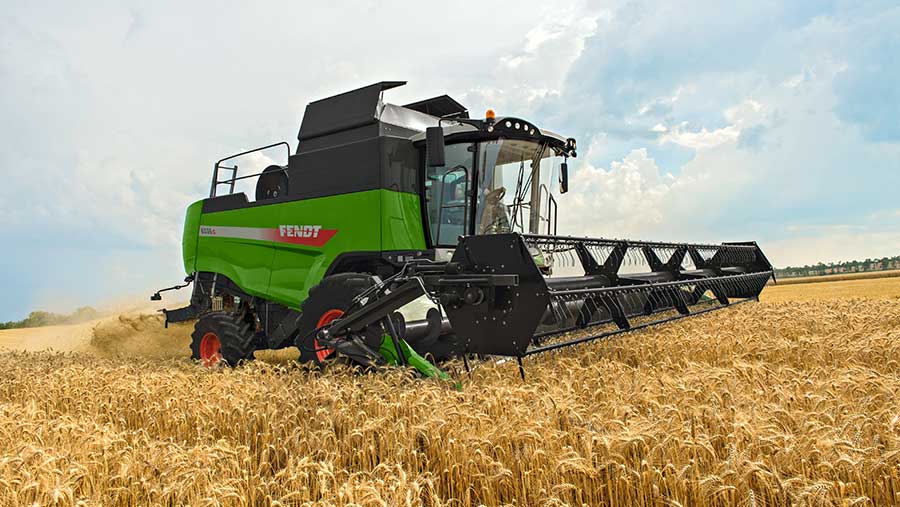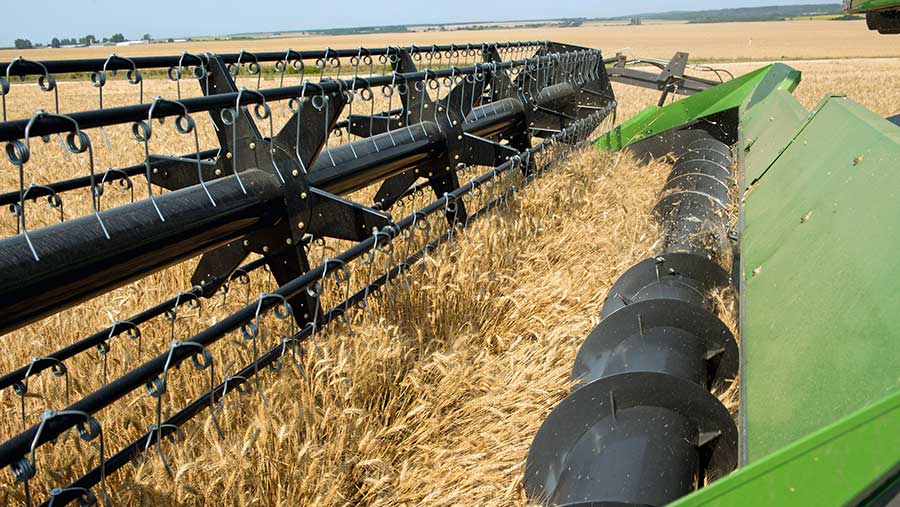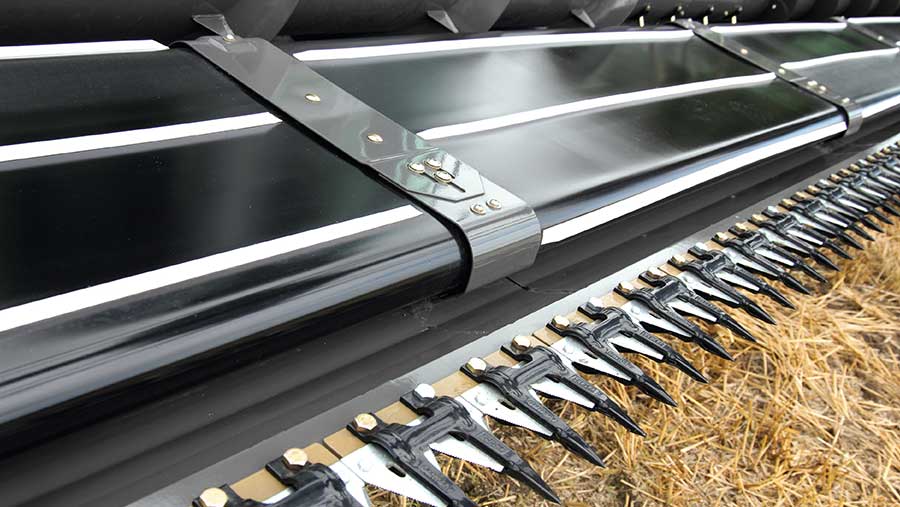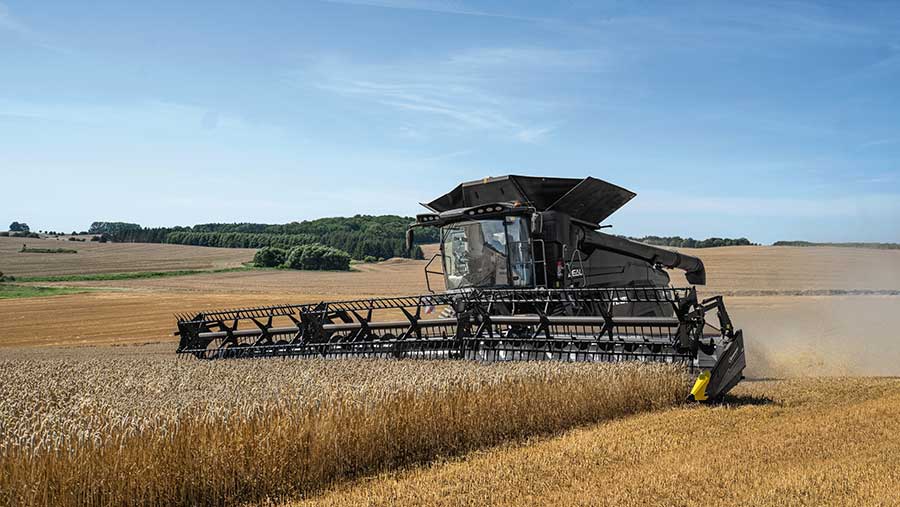Advertiser content
Power feed headers vs draper headers – fad or necessity?
 © Fendt
© Fendt For many years, traditional passive headers have been the most popular choice for farmers when purchasing a new combine.
But with the increased output capacity of many new machines, attention has turned to power feed and draper style combine headers.
In the not-too-distant past these were thought of as something exclusively for the Americas, Australia and Eastern Europe.
However, manufacturers have now launched their own versions of power feed and draper headers with a view feeding these hungry beasts.
So, what are the relative benefits of power feed and draper headers? Is it a fad or a true necessity?

© Fendt
Power feed headers
Fendt has long been associated with power feed headers offering a range of different widths under the ‘PowerFlow’ or ‘SuperFlow’ names.
The concept of a power feed header is to actively transport crop vertically from the knife using belts, up to the feed auger. At this point the feed auger moves the crop to the centre, before it enters the feed elevator.
With the crop being actively transferred to the feed auger, crop is presented headfirst, improving crop flow along the feed auger and into the combine.
Crop flow is smoother when passing through the combine, reducing wear and tear and aiding optimal threshing of the crop.

© Fendt
Power feed headers also improve combine performance in laid crops, helping operators pick up as much of the crop as possible, helping to maximise returns.
Finally, very little time is needed to convert the header back and forth for use in oilseed rape. This maximises uptime and ensures maximum productivity during harvest.
Draper headers
So where do draper headers fit? In a similar way to a power feed header, draper headers actively transport crop from the knife.
However, crop is transported horizontally along the header, to a central belt which then transfers the crop to the feed elevator.
There is no feed auger. A range of draper headers can be used with Fendt combines. The most popular manufacturers are Gerringhoff and MacDon but others are also available.

© Fendt
The benefit of a draper head is that they can ‘flex’ over the ground, following contours and leaving an even finish. With smaller headers uneven fields have not been so much of a problem in the past.
However, as header widths of 12 m and above become more common, draper headers have become more popular as a way around the UK and Ireland’s uneven fields.
Summary
With the increase in the size of combines, more catchy weather windows and larger headers, there is clearly a place for power feed and draper headers in the UK & Ireland. Far from a fad is would appear they are here to stay.
Next steps
Fendt combines are available with a range of headers designed to maximise combine output, give a great sample and reduce losses.

© Fendt
To find out more head to our Fendt combine page, or to see how the Fendt Ideal combine performs with a draper header, see the Ideal test.
Provided by
Fendt is a full-line manufacturer of agricultural machinery, offering intelligent, efficient industry leading solutions to farmers and contractors.
